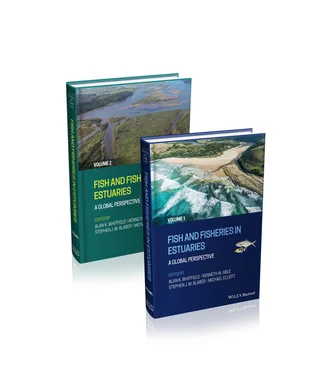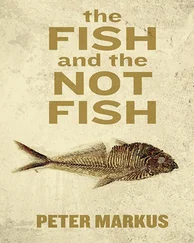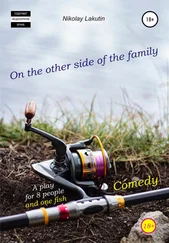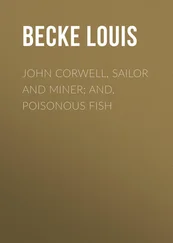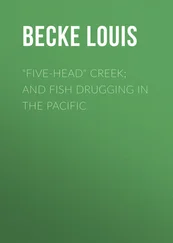1 Valley estuary ecosystems. This type of estuary (e.g. fjords, fjards, estuarine bays and most typical drowned river valleys) can have a single major channel, in which case it is referred to as a simple estuary (e.g. Thames, England), or it can have numerous tributary channels feeding into the main estuary, in which case it is referred to as an irregular estuary (e.g. Chesapeake Bay, USA). The prevailing salinity regime within this type of estuary can range, according to locality, from tidal freshwater to euhaline, but is usually oligohaline or mesohaline to euhaline.
2 Estuarine lagoon and lake systems. This type of estuary includes most intermittently open estuaries (e.g. Burrill Lake, Australia), virtually all large coastal plain estuaries that have restricted mouths (e.g. Laguna Madre, USA), as well as estuarine embayments that may be fed mainly by aquifers rather than river systems (e.g. Langebaan Lagoon, South Africa). The prevailing salinity regime in this type of estuary can range from oligohaline to hyperhaline, depending on the balance between river inflow, direct precipitation, evaporation and marine connectivity.
3 River mouth ecosystems. This type of estuary includes river mouths, delta front estuaries, as well as those systems that are characterized by typical deltaic formations. These estuaries are completely dominated by riverine influences for most of the year and may take the form of a single (e.g. Coorong, Australia) or multiple mouth arrangement (Mississippi, USA). Prevailing salinities in this type of system are mainly oligohaline and conditions range from riverine to estuarine depending on the magnitude of the freshwater inflow relative to the estuary size.
A number of books covering the biology and ecology of fishes in estuaries have been published. However, without exception, these reviews have focused on fishes in particular biogeographic regions (e.g. Blaber 2000 for tropical regions) or particular parts of the world (e.g. Able & Fahay 1998, 2010 for eastern North America; Elliott & Hemingway 2008 for the UK and Europe; Whitfield 2019 for southern Africa). This compilation represents the first global attempt to assess the status of our knowledge on fish and fisheries in estuaries in both hemispheres and on all continents (with the exception of Antarctica, which has not been studied from an estuarine ichthyological perspective). Figure 1.6presents an initial conceptual model, which underlines many of the features covered in this book (from Elliott et al. 2007).
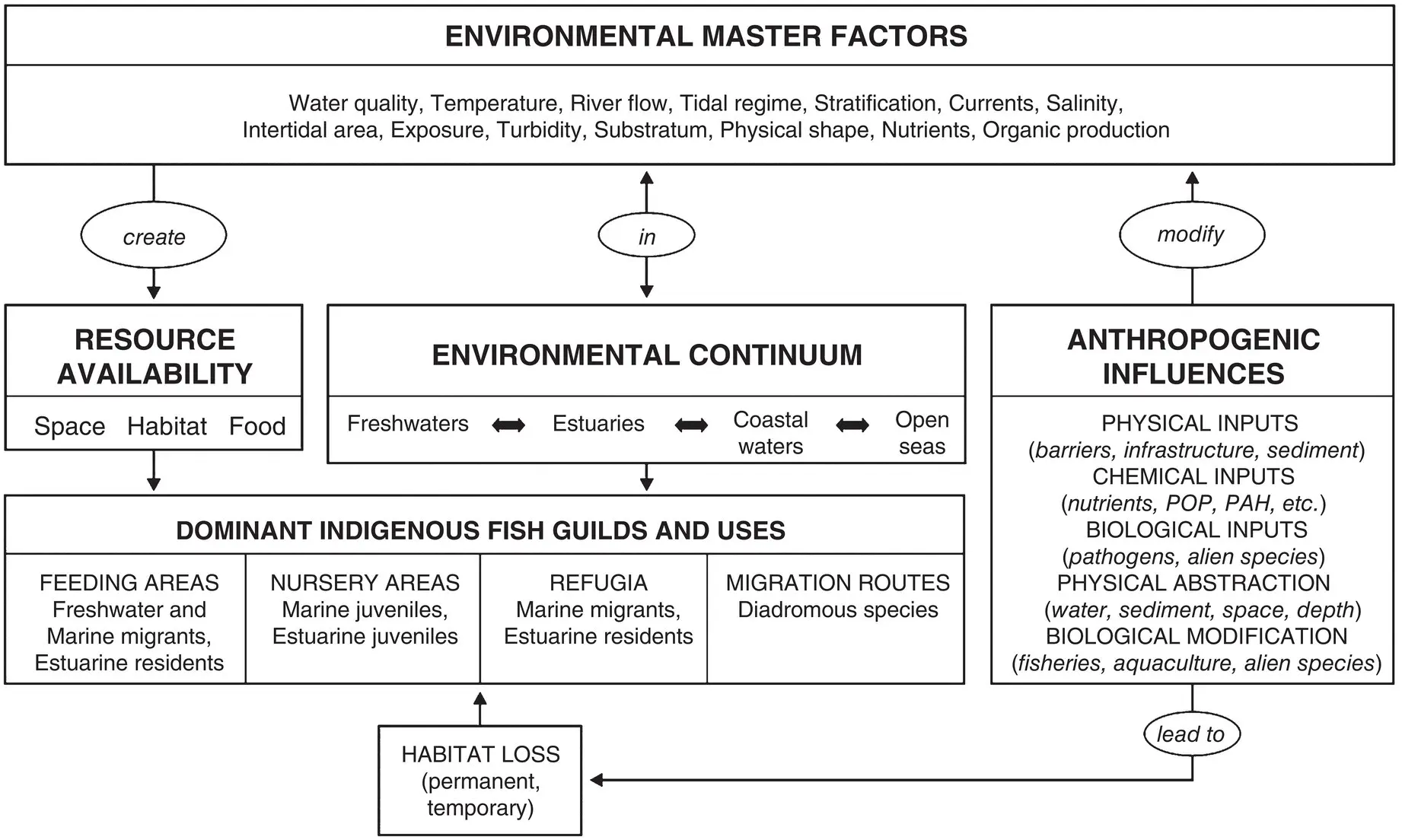
Figure 1.6 Conceptual model of the environmental, biological and anthropogenic factors influencing fishes in estuaries
(modified from Elliott et al. 2007).
Apart from the introduction (Chapter 1) and synthesis ( Chapter 13) sections, there are 12 chapters that cover the full range of topics pertaining to fish and fisheries in estuaries:
Chapter 2(Whitfield et al. 2022a) deals with the zoogeography of estuary‐associated fish species, as well as the influence of estuarine typology on the composition of fish assemblages. Included in this chapter is an examination of the nature of three fish functional groups, namely estuarine use, feeding and reproductive modes, and how these groups drive fish assemblage structure and guilds within estuaries.
Chapter 3(Houde et al. 2022) covers the reproduction and recruitment of estuary‐associated species, with an emphasis on the ecology and dynamics of early‐life stages, including eggs, larvae and juveniles, and how estuaries support these functions. The nature of estuarine and marine spawning grounds and their use by different kinds of estuary‐associated fish species is examined and the recruitment processes from these spawning grounds to specific estuarine nursery areas described. In addition, the factors driving fish recruitment, growth, productivity and its variability are discussed, with particular emphasis on both physical (hydrodynamic) and biological factors governing egg and larval mortality. Knowledge of these processes may assist in predicting recruitment variability and identifying threats to both reproduction and recruitment.
Chapter 4(Able et al. 2022) provides a focus on habitat use by fishes in estuaries. Apart from elucidating the characteristics of different habitat types, the role of habitat mosaics and connectivity between different habitat types for fishes is also examined. Much of the chapter is devoted to the dynamics of habitat use by fishes. Settlement processes in estuarine nursery habitats are covered, as are the seasonal, tidal and diel cycles governing habitat use. Site fidelity and fish movements between habitats are highlighted, with the role of episodic events in driving or preventing habitat utilization also being documented.
Chapter 5(Whitfield et al. 2022b) deals with the food and feeding ecology of fishes in estuaries. Following an assessment of fish foraging behaviour and various aspects of food intake (e.g. prey detection and feeding periodicity), the environmental and biological factors influencing the foraging of fishes is assessed. Trophic categorization of fish species in estuaries is dealt with in some detail, as is competition, resource partitioning and energy flow through the fish community. Included in this chapter is a summary assessment of the predators of fishes in estuaries and how both natural and artificial perturbations may influence food webs within these systems.
Chapter 6(Cabral et al. 2022) begins with an examination of the concepts and definitions relating to estuarine environmental health. This is followed by a review of natural and anthropogenic pressures impacting on estuarine fish assemblages and how fishes can be used as indicators to assess estuarine health. The response of fishes to human pressures is also covered, as well as disentangling fish responses in a multi‐stress context arising from global changes. The chapter concludes with some suggestions for future directions of research within this field.
Chapter 7(Gillanders et al. 2022) deals with climate change within estuaries and the impact these changes are having, or may have, on associated fish assemblages. Actual or potential impacts on fish and fisheries are assessed at the individual, population and community levels, with particular emphasis on physico‐chemical changes brought about by changes in sea level, estuary mouth morphometrics, water temperature, salinity and dissolved oxygen attributes. Case studies showing the influence of climate change on estuary‐associated fish assemblages are addressed, and the possible effects of climate change on coastal fisheries and the socio‐economics of coastal settlements is also covered. Gaps in our knowledge on the above topics are emphasized and future research directions suggested.
Chapter 8(Lepage et al. 2022) covers the topic of estuarine degradation and restoration during a period of major global change. The objectives of habitat restoration, rehabilitation and creation are described, as well as at what taxonomic level the restoration of ecological processes need to be addressed. The main sources and form that estuarine degradation normally takes are explored, as well as the array of tools available to better understand the estuarine processes so as to achieve restoration success. Both successful and unsuccessful attempts at rehabilitation are examined, in addition to the tools that can be used to assess the success or failure of such restoration projects.
Chapter 9(Blaber et al. 2022) reviews fisheries yields for estuary‐associated fishes around the world. Tropical, subtropical and temperate systems are covered on different continents, with the problems and issues pertaining to estuarine fisheries receiving particular attention. Fish production by some of the main species, including marine, estuarine and diadromous taxa are dealt with in some detail, and the way forward in terms of sustainable fishery yields is also addressed. In addition, the management of estuary‐associated fish stocks both within estuaries and in the marine environment is also covered. Case studies in all the above sections serve to bring practical management examples to the table. The chapter concludes with a summary of the measures for successful management, gaps in our knowledge relating to management and recommendations to fill these gaps.
Читать дальше
